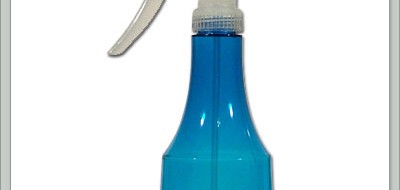By Lynn Difley
 Here’s a great way to fight bacteria, keep your galley and bathroom disinfected, without using an arsenal of chemicals that are expensive, toxic, and risky to grandkids, pets, and sensitive folks. A study done at Virginia polytechnic Institute took fruits and vegetables contaminated with salmonella, shigella, or e. Coli bacteria, and sprayed the produce with hydrogen peroxide, vinegar, and both.
Here’s a great way to fight bacteria, keep your galley and bathroom disinfected, without using an arsenal of chemicals that are expensive, toxic, and risky to grandkids, pets, and sensitive folks. A study done at Virginia polytechnic Institute took fruits and vegetables contaminated with salmonella, shigella, or e. Coli bacteria, and sprayed the produce with hydrogen peroxide, vinegar, and both.
Hydrogen peroxide proved 100 times as effective as vinegar, but using vinegar and hydrogen peroxide together kills 10 times as many bacteria as peroxide alone. This is such a simple system. Both vinegar and hydrogen peroxide are natural substances, harmless to humans, pets and environment. The sprays don’t linger on surfaces, so you don’t have to rinse after use, and microbes don’t acquire resistance (no risk of creating Superbugs).
Here’s all you have to do to set up your domestic spray program.
Buy two plastic spray bottles in two different colors. One bottle must be completely opaque, and in as dark a color as you can find. This is for the hydrogen peroxide, which degrades if it is exposed to light or heat.
You need separate bottles for each to maintain full strength effectiveness of the hydrogen peroxide which is delicate and will quickly break down into pure water.
Buy a gallon of distilled white vinegar and a big bottle of consumer strength (3 percent ) hydrogen peroxide at the drug or grocery store. Fill your dark spray bottle with hydrogen peroxide and store in a cool dark place. Do not use laboratory strength-30 %, it is volatile.
- Implementing a Domestic Spray Program
I have been using this dual spray system for years, and frankly, it couldn’t be easier. Vinegar and hydrogen peroxide are natural substances that are produced by living organisms. Our own bodies produce hydrogen peroxide (H2O2) as a byproduct of metabolism. Hydrogen peroxide is essentially a water molecule with an extra oxygen atom attached. When hydrogen peroxide is exposed to heat, light, or organic material, it releases its extra oxygen; pure water and oxygen are produced by this reaction. Pure oxygen is extremely toxic to microorganisms, which is why hydrogen peroxide is such an effective antiseptic. It is rather gratifying to watch hydrogen peroxide bubbling and foaming as it kills bacteria; when the bubbling stops and cannot be restarted by the addition of more peroxide, the deed is done. - Pour the vinegar into the second squirt bottle and you are equipped and ready to do battle with the bacteria bugs.
- To disinfect produce, wash the fruit or veggie to rinse off any dirt or grit, then spray first with vinegar, then with hydrogen peroxide. The peroxide has no taste and rises the vinegar off the produce, so you don’t need to rinse again
- Meats–Spray red meat, fish or poultry with vinegar, then hydrogen peroxide, no rinsing needed.
After you clean meat, fish or poultry, wash the sink with a dish cloth and dish soap, then wring out the cloth before you throw it in the laundry. Spray the sink with vinegar, then peroxide, and use the sprays on any handles, doorknobs or cabinets you touched when you had your hands on the meat.
Use the sprays to disinfect countertips, refrigerator, stovetop, or any other surface that worries you.
It probably doesn’t apply to you, but marble countertops should not be sprayed with vinegar or hydrogen peroxide. You should not spray marble or other natural stone surfaces.
So there you have it, a fantastic cleaning and disinfecting system that only costs pennies and doesn’t present any risk to pets, grandkids, or overenthusiastic partners. I’m going to go refill my spray bottles and get busy squirting.




Pingback: san diego web water dept
jm
hi Lynn,
will your formula also kill / clean common mold spots?
thanks!
Ann
Hydrogen peroxide will bleach fabric (clothing, upholstery, draperies); aim carefully to avoid damage.
Pingback: Overland Tips: Healthy Dissinfectant | Overland Journey